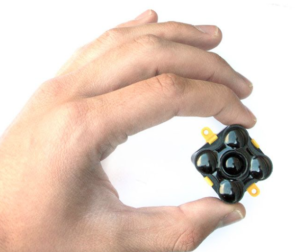French sensor and sensing options firm Terabee has introduced a new addition to their line of light-weight, small-dimension, low-value distance and ranging sensors.
The TeraRanger Evo sensor weighs simply 9g (about 1/three ounce – 12g with communication board), making it perfect to be used on drones. Despite the sensor’s tiny dimension, it may make distance readings at as much as 60m (nearly 200 ft). Rather than laser, the sensor makes use of LED know-how.
“Ease of use has always been a key feature of TeraRanger sensors and Evo is no different,” says Terabee. “There are no calibrations, compensations or data translations to do, so the sensor is essentially plug and play, streaming distance values in digital format.”
“Adding to the ease of use is the clever two-part construction where the black colored optical sensor module simply clips to the yellow colored backboard for power management and communications.” The sensor is drone-agnostic, providing two completely different commonplace backboards and any customization as required.
Greg Watts, Commercial Manager at Terabee explains, “With this sensor we’ve taken both ease of use and performance to another level. We’ve always had strong demand for our sensors from the drone community, so we have made sure the sensor is easy to mount on drones and setup and use with popular autopilots such as Pixhawk, for example.”
The use of close to-infrared LED as a substitute of laser offers the TeraRanger Evo a bonus. “By using near-infrared LED’s rather than laser, TeraRanger Evo benefits from a 2 degree field-of-view, so that, rather than measuring distance based on a very small point of light, the sensor measures over an area,” says Terabee.
“For many drone applications”, feedback Greg Watts, “this is a significant advantage, allowing you to detect smaller targets, or hazards, that a laser might miss. You also benefit from a more stable datastream in fast changing conditions, such as flight above crops, where the laser might measure the distance to the ground, and then the crop and then the ground again, all in close succession. These are typical of the use cases where customers tell us they get better results from TeraRanger than they did from their lasers.”
 Unmanned Aerial Vehicle The latest drone news
Unmanned Aerial Vehicle The latest drone news





